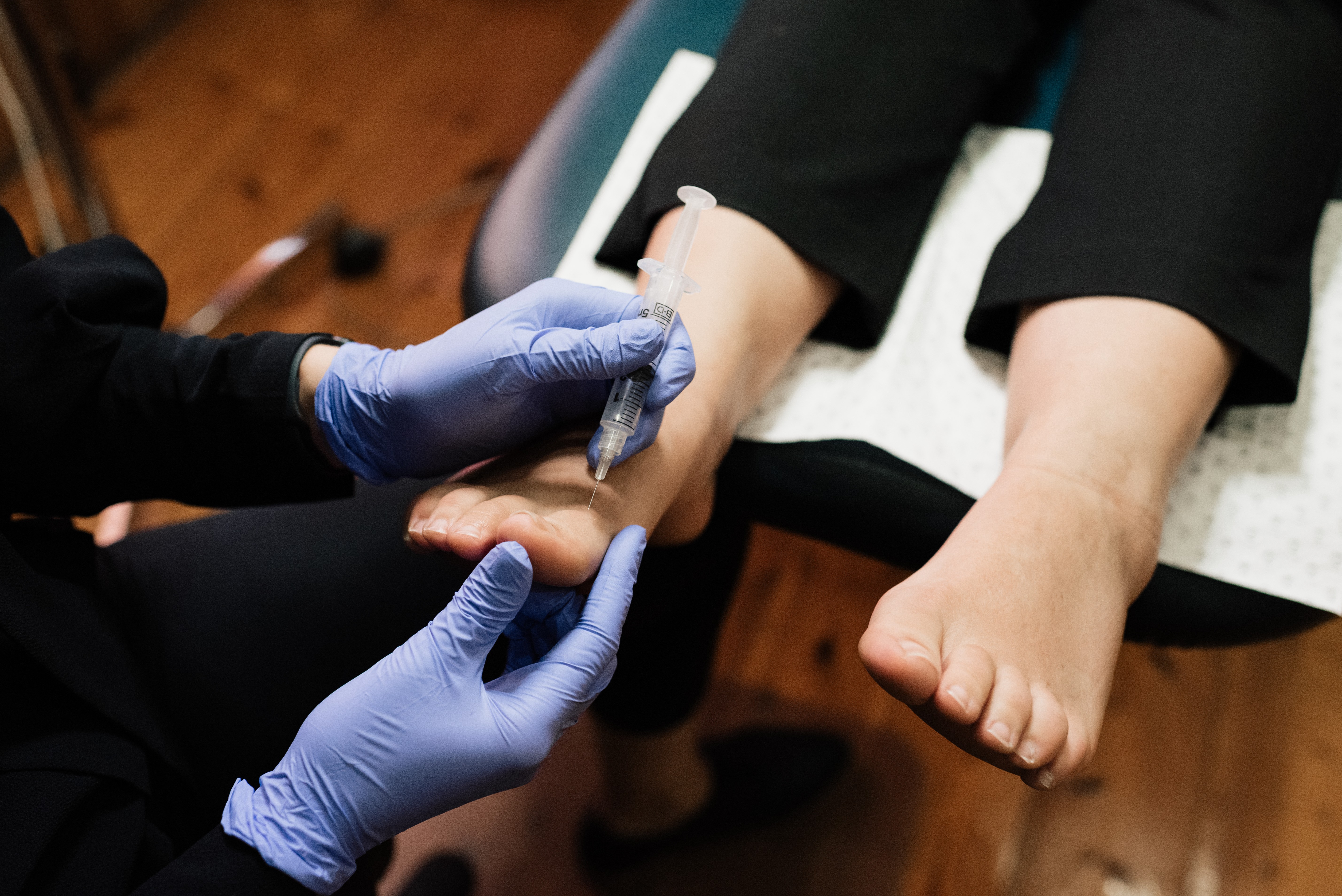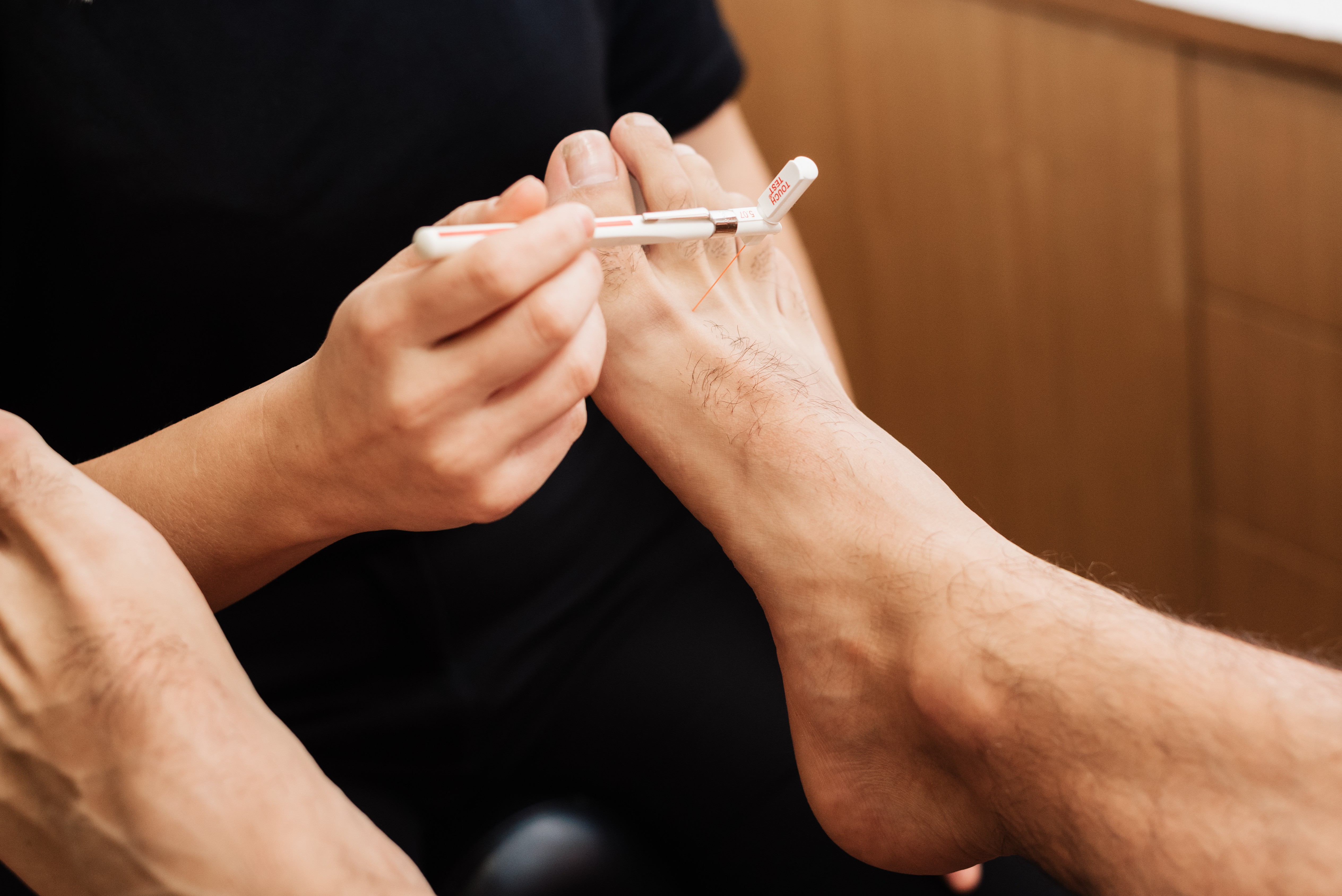Plantar fasciitis & Plantar Heel Pain Syndrome – What’s the difference?
Plantar fasciitis, or Plantar Heel Pain Syndrome (PHPS) is one of the most common conditions that presents to our clinic and is one of the most common causes of chronic heel pain in the adult population. Plantar Heel Pain Syndrome is a musculo-skeletal disorder affecting the insertion of the plantar fascia into the heel bone. Although this condition is commonly referred to as plantar fasciitis, recent research indicates that inflammation is rarely observed and therefore the “itis” should be dropped. Plantar Heel Pain Syndrome also acknowledges the complexity of this condition as it develops over time, involving more muscles and structures as people try to adapt to the pain. It is thought to be linked to an increased BMI and poor biomechanics, but there are generally a wide range of contributing factors. These factors can be changes in activity and footwear or problems in other parts of the kinetic chain such as knee, hip or back injury.
Plantar Heel Pain Syndrome is often seen in patients that are trying to improve their fitness, lose weight or preparing for that long awaited overseas holiday. It is marked by pain on rising, as people get out of bed, or after prolonged sitting. This pain will often resolve within the first few steps of walking and the patient will usually forget about it until the next morning. As this pattern continues and develops, it takes longer and longer for the pain to disappear until eventually it stays all morning or all day. The inside edge of the heel itself is painful to pressure and can extend into the arch of the foot.
Treatment of Plantar Heel Pain Syndrome
It is important to seek professional help as soon as possible. Early intervention leads to early resolution of this condition. Your Podiatrist will often use a combination of treatments depending on specific diagnosis and the severity of the heel pain, these may include;
For further information or advice, contact us for an appointment.

Ingrown toenails can be painful, unsightly and debilitating. This post explores the many different factors that drive an ingrown toenail and how to prevent their development or manage them successfully.

When is it time to change your running or walking shoes? How long do they really last and what are the main signs that your shoes are ready for a change?

In the realm of diabetes management, where foot health plays a pivotal role, individuals in the Australian population are finding a trusted ally in PodSquared Podiatry. Specialising in comprehensive foot care, PodSquared Podiatry takes a proactive stance in addressing the unique challenges posed by diabetes. In this blog post, we'll delve into the tailored approach PodSquared Podiatry adopts to ensure optimal foot health for those managing diabetes.